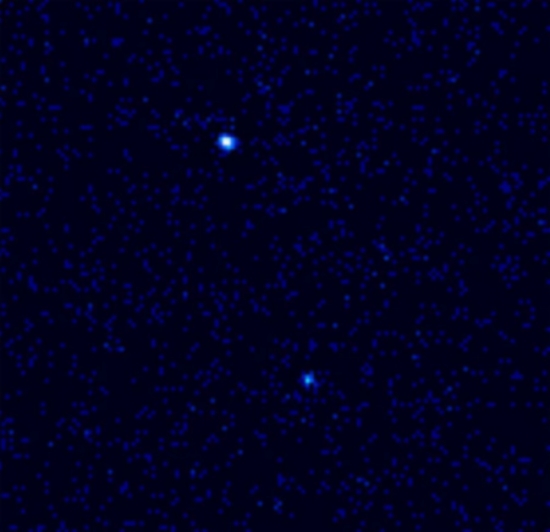
 Credit: NASA/Chandra/Wijnands et al.
Credit: NASA/Chandra/Wijnands et al.
Neutron Star too Cool for School?
Neutron stars are balls of extremely dense material only a few tens of
kilometers in radius. Since they are so dense they are of great interest
to astronomers, since they allow astronomers to examine the effects of
extreme gravity on matter and light. Since neutron stars are forged in
titanic stellar explosions, they should be formed hot, but should cool as
time passes - the exact manner by which they cool provides astronomers with
important information about the inner composition of the neutron star.
Complications occur since some neutron stars have gravitationally bound
companion stars, and accretion of material from the companion by the
neutron star can reheat the neutron star surface. Exactly how this happens
is not yet well understood. A recent observation by the Chandra X-ray observatory of a
neutron star binary system known as KS
1731-260 showed that this system (the blue dot at the upper left in the
image above), which had been bright in X-rays since its discovery in 1989,
had greatly decreased in brightness. Most surprising to astronomers, the
temperature of the neutron star as measured by Chandra was "only" 3 million
degrees, about a factor of 3 lower than expected. Astronomers suspect that
the neutron star was very cold for thousands of years due to the absence of
accretion, and that its current relatively cool temperature signals that
accretion onto the neutron star surface has only recently started.
Last Week *
HEA Dictionary * Archive
* Search HEAPOW
* Education
Each week the HEASARC
brings you new, exciting and beautiful images from X-ray and Gamma ray
astronomy. Check back each week and be sure to check out the HEAPOW archive!
Page Author: Dr. Michael F.
Corcoran
Last modified January 21, 2002


